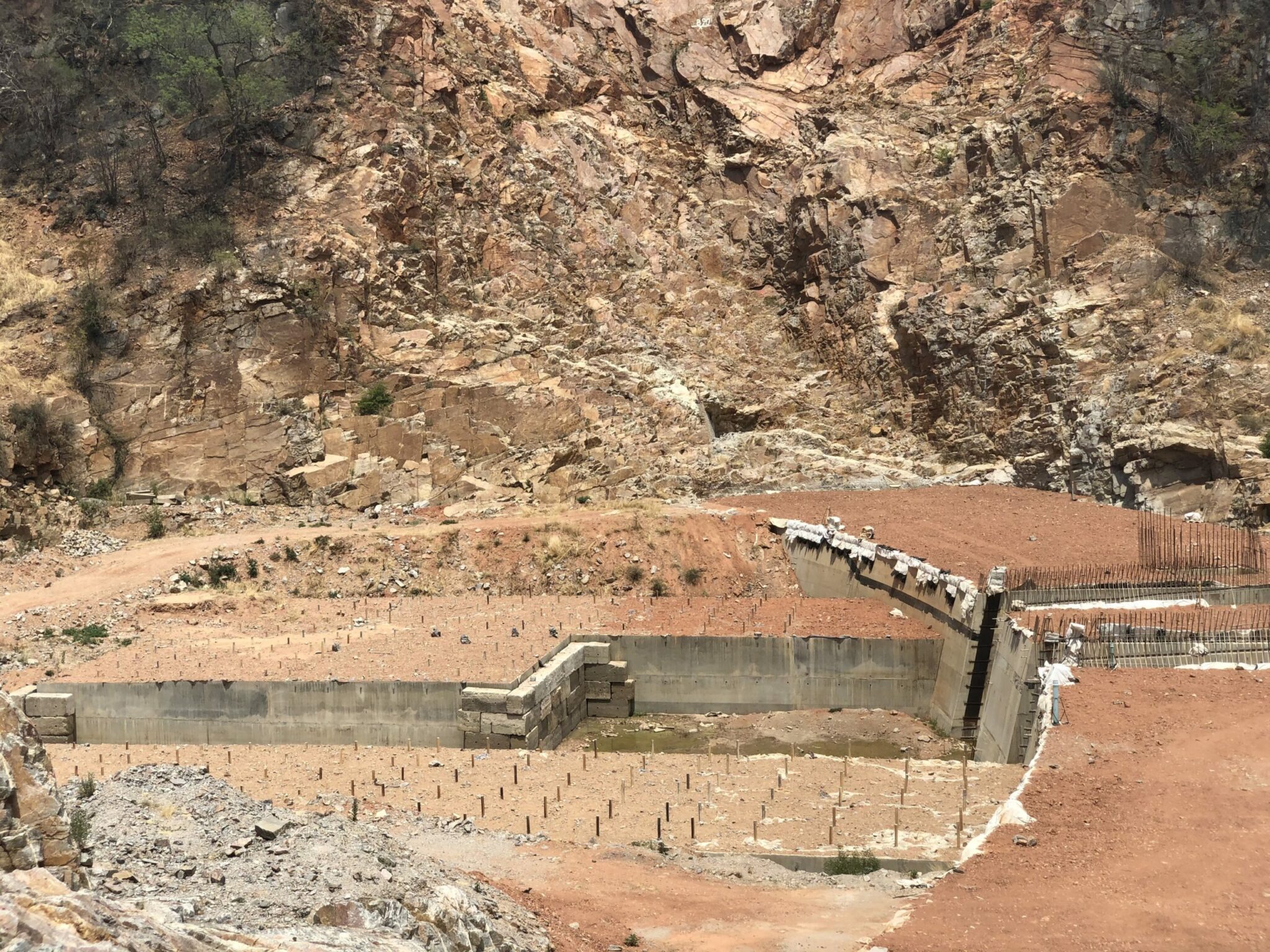Construction of the Gwayi-Shangani Dam may take longer than expected, with funding constraints as the major challenge slowing progress yet the project is touted as the answer to Bulawayo’s current severe water crisis.
The estimated date of completion was 2021 but construction of the dam currently stands at 39 percent, with most of the construction being site structures, facilities and housing.
Further worsening the delay is the contractor’s absence as he is in China.
“Unfortunately this year we were unable to do much of the construction because our contractor went back to China. He is Chinese and went to China in early January and has been held by Covid-19. Although we are conducting minor works with his expatriate staff that remained on site,” said Assistant Resident Engineer Lucio Chayeruka during a tour of the project in Gwayi-Shangani Wednesday.
“We have been greatly affected, as we cannot rush to complete construction. We also have to allow the concrete to set, which means timelines have to be extended as well.”
Chayeruka said the contractor (China International Water and Electric Corporation) was scheduled to return to Zimbabwe in January next year and resume construction.
“Rest assured, construction will be taking place next year. Also the contractor couldn’t have come during this time of the year because once we start experiencing rains, we normally stop construction,” he said.
The new estimated date of completion has now been set to 2022.
“It’s not final because it will depend on stages we are to formulate because as you know, it’s now common knowledge that we are now behind schedule. We have to discuss with the contractor on how to improve speed of completion such that by mid-2022 we are done the project,” he said.
Funding for the project still remains a challenge, as it has been inconsistent, confirmed Chayeruka, who noted dam construction and laying of pipeline could not be done simultaneously.
“The major reason why this project has been dragging is funding. Funding hasn’t been consistent but some weeks back we were visited by the Minister of Lands, Agriculture, Water and Rural Settlement, who has a mandate to finish this project. By the way the Gwayi-Shangani Dam is now the top priority in the country. I don’t think we will see another project completed before this one,” he said.
“We are failing to construct up to speed what more when we have two concurrent projects. However, it would have been wise to for us to do these two phases simultaneously so that upon completion, water would be availed.”
He highlighted that for the first phase, US$121 million was poured into the project.
“I haven’t seen the bill of quantities for this project but we have already used up 39 percent of the funding but as you will see we have most of the material on site. We only need to buy cement…”
The resident engineer, however, could not state whether the contractor would come back to a fully paid bill, as previous reports said he had not been paid.
“I’m not up to date with the payments but I currently know the client (government) is in the process of fulfilling all the outstanding payments. From July to date, the contractor is being compensated for outstanding works he has already completed. I am not aware of the amounts and can’t be 100 percent correct that when he returns these payments would be paid. But I’m sure that in January he will resume construction,” Chayeruka said.
Vice Chairperson of Amanzi Trust, an alliance for Matabeleland and National Zambezi Initiative, Sakhile Dewa questioned whether the engineers were incorporating use of new technology, taking into consideration that construction had taken a long time.
“We have received advice from external engineers who actually insinuated there’s no need for this dam because the water can be pumped straight from the Zambezi,” she said.
In response, the resident engineer, said he would take these concerns to his superiors but noted they had marked certain risk of failure in the supply of water from this dam.
“When designing we came up with a four percent risk level and 10 percent risk level. Four percent risk level means in four out of 100 years we might fail to abstract the target volume of water we had stated, same applies with the 10 percent risk level.
“Instead of using the four percent risk level about 160 000 mega litres, we will work with a 10 percent risk level using 209 000 mega litres, as the quantity we can abstract per year when supplying Bulawayo. There’s probability that in 10 out 100 years, we might fail to supply this quantity due to rainfall patterns. We then consider whether the pipeline from Zambezi will be it enough to supply water when this one is down,” Chayeruka said
The Gwayi-Shangani Dam has a gross capacity of 691.140 million cubic metres while its full supply capacity or live capacity is 634.270 million cubic metres.

